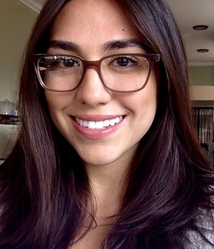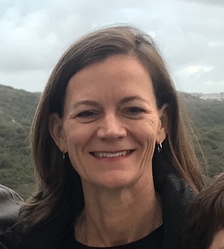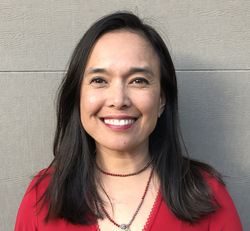This story is part of an occasional series about California-based pediatricians who are incorporating ACEs screening into their practices. In the first installment published in May, which you can find here, Dr. Amy Shekarchi and other team members had just launched their ACEs screening by phone.
A community health worker from a clinic affiliated with Los Angeles County’s Department of Health Care Services recently called a teenage patient to find out if she ever felt unsafe in her home or neighborhood. The community health worker planned to ask the 17-year-old questions such as whether she has ever experienced physical, sexual or emotional abuse or witnessed violence at home or in the community. As in an in-person screening, the presumption was that the teen was answering the questions alone (More on that later).
These questions are part of a survey of adverse childhood experiences, a term that comes from the landmark CDC/Kaiser Permanente Adverse Childhood Experiences Study (ACE Study) that linked ACEs to adult onset of many chronic diseases, mental illness, violence and being a victim of violence in more than 17,000 adults.
The questions were being asked of the teen partly because of the pandemic, which has resulted in worries about an increase in child abuse, and also as part of an 18-month pilot program of ACEs screening of pediatric patients in six clinics, all affiliated with the Los Angeles County Department of Health Services. With the goal of screening about 50,000 pediatric patients, the lead investigators — Drs. Shannon Thyne and Amy Shekarchi, both pediatricians at Olive-View UCLA Medical Center — want to learn what went well, what didn’t work and what type of support patients request the most. The pilot’s target ages for screening are at 9, 18 and 30 months with interviewers questioning the parents about their babies and toddlers, as well as youth between the ages of 12 and 21, who answer the survey questions themselves. They’re using a version of the pediatric ACEs screening tool approved by the state known as the PEARLS tool. [It stands for Pediatric ACEs-Related Life Events Screener.] The tool also includes additional questions about needs for transportation, legal assistance, education and employment resources, and it asks parents about their strengths, and their child's strengths.
The Los Angeles-based pilot builds on the work of the original ACE Study, which examined 10 types of childhood traumas — including living with an alcoholic or depressed parent or experiencing abuse or neglect — in adults who were mostly white, middle- and upper-middle class, college-educated, and had jobs and great health care. The study found that ACEs are common — most people have at least one. People who have four or more different types of ACEs — about 12 percent of the population — have a 1200 percent higher risk of attempting suicide and a 700 percent higher risk of becoming an alcoholic, compared with people who have no ACEs. Many other types of ACEs —including racism, bullying, a parent being deported, and community violence — have been added to subsequent ACE surveys. (ACEs Science 101; Got Your ACE/Resilience Score?)
The epidemiology of childhood adversity — which produce ACE surveys — are one of five parts of ACEs science, which also includes how toxic stress from ACEs affects children’s brains, the short- and long-term health effects of toxic stress, how toxic stress is passed on from generation to generation, and research on resilience, which includes how individuals, organizations, systems and communities can integrate ACEs science to solve our most intractable problems.
The Los Angeles-based researchers hope to integrate practices based on ACEs science into their clinics’ practice. Since May, when the project was launched, about 200 patients have been screened. While she can’t provide precise data, Thyne says that, so far, a small number of patients had ACE scores of 3 or more. But 80 to 90 percent requested help with basic needs, such as housing, food, acquiring jobs, and child care — needs that Thyne surmises have intensified during the pandemic, and was not at all surprising based on their team’s earlier research.
These clinics are part of a sea change in California that put the problem of widespread trauma front and center. It began last January, following the passage of AB340 in 2017, a law that offers incentive payments to pediatricians and other providers who screen Californians served by Medi-Cal, the state’s Medicaid program.
In preparation for the pilot launch, around 150 staff members at the six pediatric clinics were taught the basics of how trauma affects behavior and the brain, how to respond to behaviors induced by trauma, and how to have a conversation about ACEs that highlights the parents’ strengths. Staff were also prepared to help set up counseling appointments and to offer links to community organizations that help with housing, hunger or other stressors that can throw family life into chaos.
The clinics were poised to begin screening patients in March, but then the COVID-19 pandemic hit, and they were forced to pause until May to transition about 40 percent of their ACEs screening from in-person visits to phone calls. (The in-person ACEs screenings have largely been during infants’ well child visits to their doctors.). As part of that shift to phone calls, the team worked on what to do if a phone call triggered a concern.
They had an opportunity to test out such a contingency when a phone call with the teenager didn’t go as planned. The teen told the staffer that she was safe and alone.

“She was asked three times, and each time she said ‘Yes’,” says Jamie Ruiz, the ACEs screening coordinator for the six sites. But when the staffer began asking the ACEs questions, Ruiz explains that she heard the patient’s mother interrupted. “She started asking the staff person about her qualifications and said she didn’t want her daughter to answer the questions.”
After hearing about the call, Ruiz contacted the patient’s doctor and a social worker familiar with the family. The social worker wasn’t particularly concerned. She said the mother “was known to be very [vigilant] about her daughter’s care,” and that she didn’t think the teen was in any danger. Nonetheless, the social worker reached out to the mother, and encouraged her to discuss any concerns she had with her daughter’s doctor. Apparently at a recent in-person visit with her doctor, the mother allowed her daughter to fill out the ACEs questionnaire. “And it wasn’t even brought up as a concern by the parent or the patient,” reports Thyne who asked the clinic leadership about what transpired.

That encounter highlights the challenge of ACEs screening by phone. In this case, the interviewer thought the teen was talking privately, although she was not. In other cases, clinicians worry there could be an abuser in the home who is listening nearby. “Because when you don’t have a face-to-face interaction it’s harder to pick up if someone is uncomfortable or afraid,” says Ruiz.
As a result of this difficulty, staffers who screen by phone have been instructed to err on the side of caution if they have any inkling that someone may be at risk and to contact the patient’s doctor, says Ruiz.
This type of follow-up is especially critical during the pandemic. “Referrals for [suspected child abuse] are down 40 percent,” says Thyne. “And it’s largely attributable to the loss of the number-one place where referrals [typically] come from – the schools. So, if anybody has an ACE score of 3 or more, we immediately respond that day, whether it’s to their [medical] provider or getting social work engaged to make sure nobody is in imminent danger.”
If the COVID-19 pandemic has presented logistical challenges for the team in screening for trauma, in other ways it has opened up communication. “The patients are asking us as providers about how we’re doing. So, it’s normalized discussion about trauma and [ACEs screening] during the COVID-19 pandemic,” says Thyne.
As is typical for pilot studies, researchers start with a plan and tweak it along the way, based on feedback and lessons learned. One big realization was that they couldn’t do their initial plan of using the deidentified version of the PEARLS screen by phone. A deidentified screener allows patients to count up all the ACEs questions that apply to their child and put the total at the top of the form. When asking the questions verbally by phone, however, “By necessity, we use the identified version of PEARLS,” says Thyne.

Another realization was that they hadn’t created a way to document when a patient declines to do the ACEs screening. “So, we’re having our IT person create a field [in the electronic health record] to ensure that we don’t ask the patient over and over and over about responding to an ACEs screening,” says Shekarchi, who is the pediatric primary care director at Olive-View UCLA Medical Center. In the introductory scripts used by staff members prior to ACEs screening, they make sure patients know that their participation is voluntary, and that they are free to stop answering questions at any time. Researchers also have sent letters to patients explaining the reasoning behind ACEs screening, that by answering the ACEs questions the patient’s doctor can “support you to prevent long-term health issues related to these stressful experiences.” They’re also soliciting patient feedback of their experiences in the pilot by email.
The pilot has also laid bare some systemic problems. Three of the clinics that are part of the pilot specialize in working with foster care families. A teenager in the foster care system may have enough information to fill out his own ACEs questionnaire, but for younger children, all bets are off.

“Foster parents of a younger kid might not know that child’s ACEs,” says Nina Thompson, who is the data and project manager for the pilot. As a result, she says they’re trying to figure out whether they attempt to screen the entire foster kid population or only the teenagers?
“If ACEs affects your overall health and a [foster parent] is responsible for seeking healthcare for the child in their charge, they should know about [the child’s ACEs]. So, we need to figure out systems to make sure that information is available to foster parents so they could help their foster kids get better health,” adds Thyne.
They’re also working to ensure that patients use the resources they’re offered. “Resources aren’t just giving people a list of [places] where they can go,” says Shekarchi, who explains that only 25 percent of people make those connections themselves.
As a result, the pilot has partnered with a program run by the Department of Health Services known as Strong, Healthy and Resilient Kids (SHARK), which helps make connections to community resources. “The SHARK team talks with the family and helps them identify what their needs are and develop an individualized plan,” says Shekarchi, who says thus far they have referred about 100 patients “I think SHARK has [facilitated] many positive connections.” But says Shekarchi SHARK is a small program.
The big question is if the program will be able to deliver for everyone when it’s serving tens of thousands of patients.
“We have 50,000 pediatric patients, so you better have some place to send people,” says Thyne. “Part of the reason we’re doing the rollout the way we are is to make sure that as we figure out what the needs are, there’s a ‘there there’ for response.”







Comments (0)